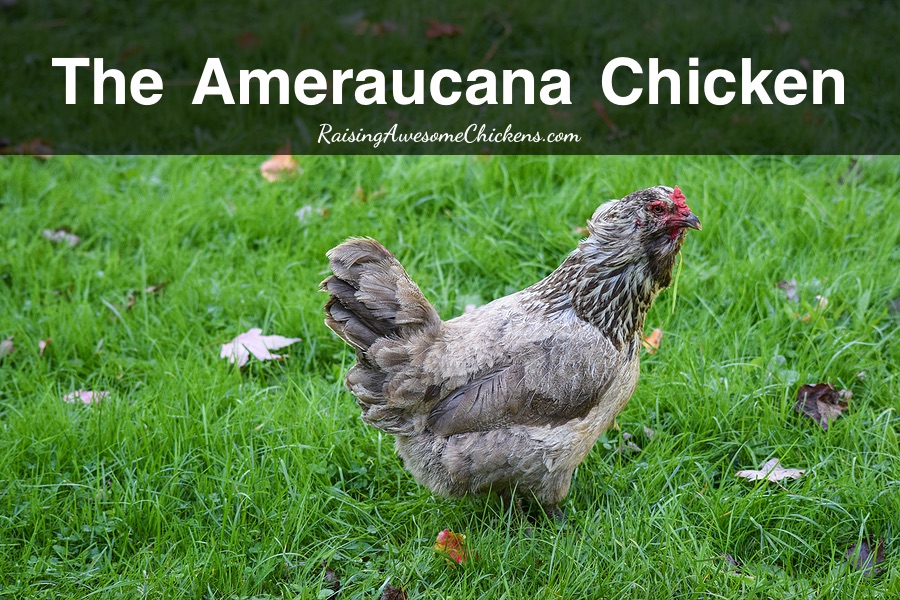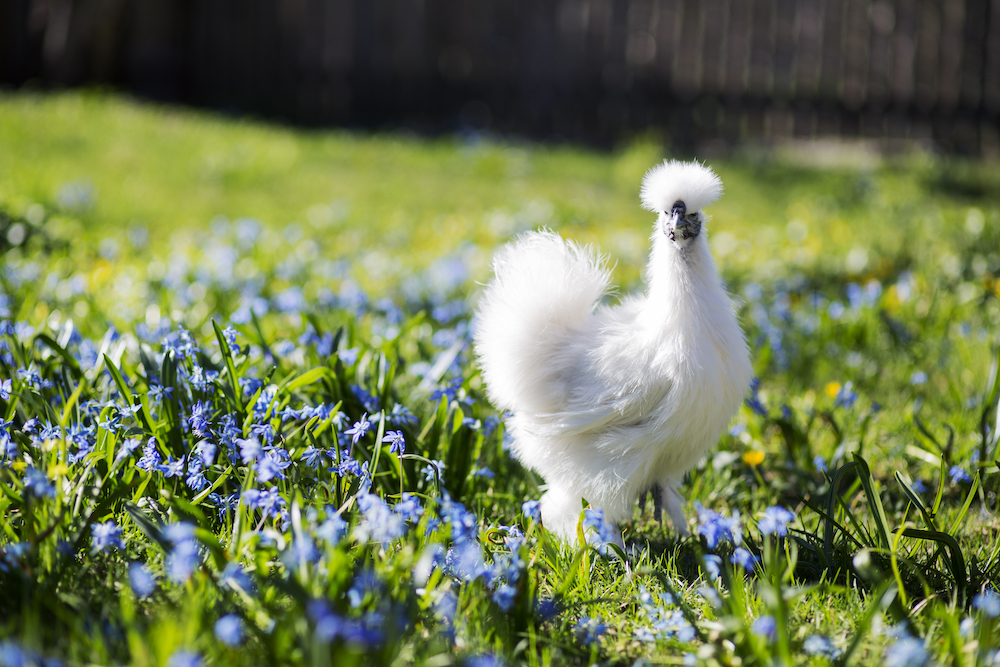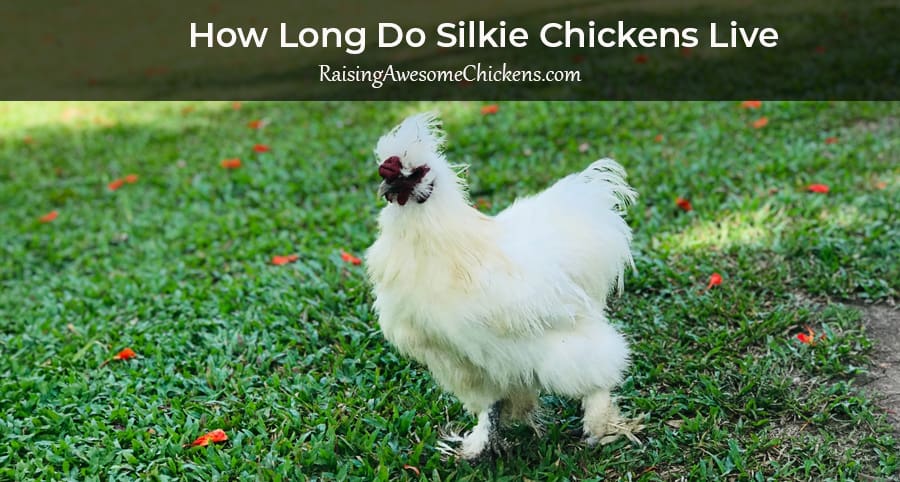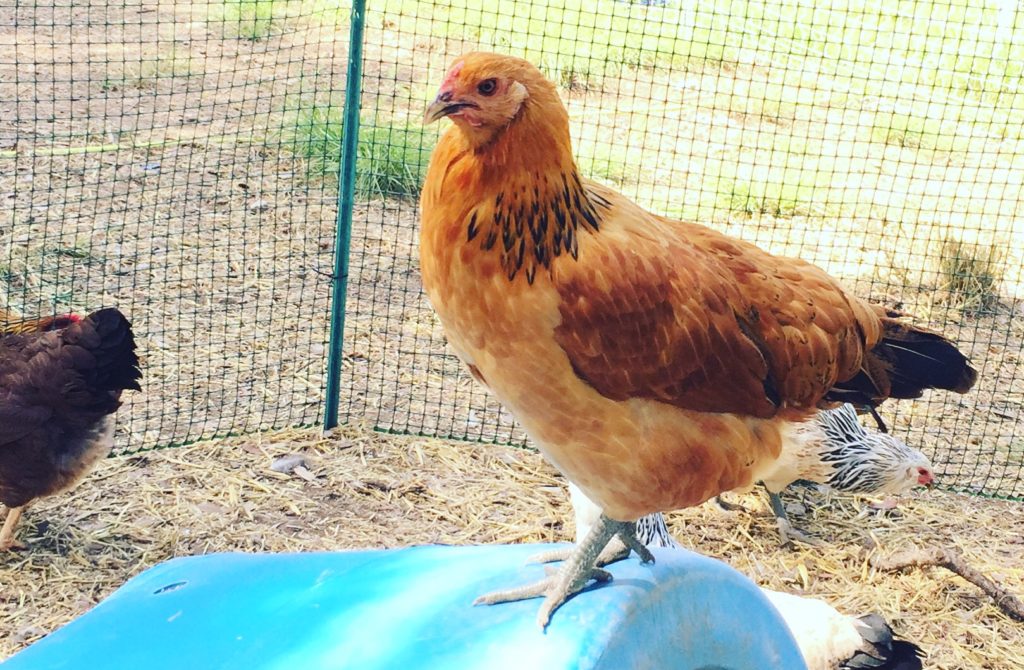Last Updated on July 15, 2021 by AwesomeChickens
Nobody in the world had seen an Ameraucana chicken before the 1970s, and that’s because they had yet to be created. The Ameraucana may look like a typo of someone trying to write “Americana,” but we assure you, it’s right. Below you can find out more about this amazing chicken, its origins, and what makes it unique, like its beautiful blue eggs.
Table of Contents
Ameraucana Chicken: Origins
This humble but unique chicken can trace its origins to the Araucana chickens in Chile, South America. After being developed as a new breed in the late 1970s, they were eventually admitted to the Standard of Perfection of the American Poultry Association in 1984.
The breeding was not random but done by design to try and retain the blue-egg gene that the Araucana chickens had while eliminating the more dangerous alleles of the Araucana breed. These genetic traits were removed to create a tailed version of the originally rumpless Araucana breed.
In the United States, the Ameraucana is considered to be a distinct and separate breed from Araucana, but in other countries, the Ameraucana and Araucana are seen as one breed.
Basic Characteristics
The first and most striking thing you get when keeping and raising Ameraucana chickens is the delightful blue hue on the eggs. This is perhaps the most famous thing that people know and recognize about this chicken breed, but what do they actually look like?
Here are some basic traits:
- Male Weight: Approx. 6.5lbs
- Female Weight: Approx. 5.5lbs
- Bantam Wight: Approx. 24-30oz
- Distinguishing Features: Pea comb (red); wattle (red); beard and muff; U-shaped body; no leg feathering
- Egg Color: Blue
- Egg Production: 3-4 eggs per week; medium size
- Color Variants: Black, blue, blue wheaten, buff, silver, wheaten, white
- Personality: Independent; like to free range; friendly, docile
Ameraucana – The Positives
1. Personality: First of all, it should be said that the Ameraucana is a sweet and docile chicken with a pleasing personality. This makes it a great choice of chicken for beginners. In addition, their relative intelligence makes them very capable of looking after themselves, and so rookie mistakes will largely go unnoticed in terms of their health and well-being. The personality also translates well into a mixed flock, and your Ameraucana chickens should get along famously with other chickens. At least, they won’t start any trouble in the coop!
They are quite amenable to human interaction but remember that they are not puppies. They may not respond well to humans always trying to pick them up and cuddle with them. The main benefit of this tame attitude around people is that they are not flighty or scared, making them easy to deal with.
2. Eggs: Have you ever wondered what chickens lay blue eggs? The beautiful blue hue of Ameraucana Chicken eggs is hard to resist. They are a decent medium size, and each chicken will produce around 3-4 per week. That’s up to about 200 eggs per year, which is an excellent amount for a small family starting with their first chickens. Another positive is that they’ll lay all year round. You can expect a small slowdown in the winter months, however, but usually nothing drastic.
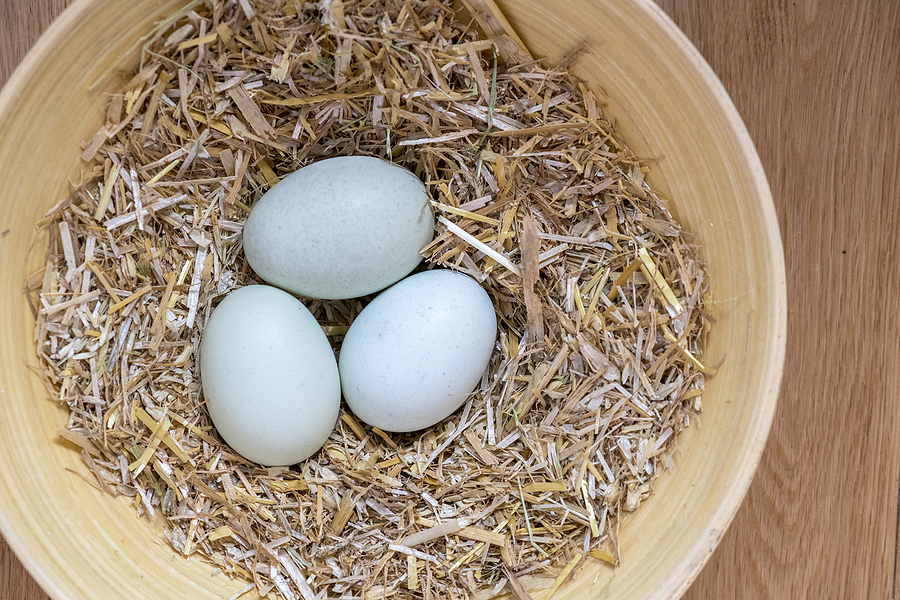
The blue of the eggs is also very genuine and very beautiful. It’s not an after-effect like the brown of many eggs that you can rub away to reveal the white shell underneath. These blue shells are blue through and through. They’ll certainly help brighten up your kitchen if you like to keep eggs on your countertop.
3. Free Range: The Ameraucana chickens are fantastic foragers and free-rangers. You need only have any confinement for them at night to protect them from predators like foxes. Then, all they need is a bit of space and light during the day, and they’re happy.
4. Unfussy and Quiet: Ameraucana chickens are uncomplicated and unfussy. They don’t need fancy food or any special measures to keep them happy. You can give them a standard 16-percent protein content feed, and any other food they want, they will forage. Combine this with their “chill” personality, and they live for a very respectable 7-8 years or even longer. Finally, they are also mercifully quiet, even the roosters. They make a lot less noise than many other breeds.
Ameraucana – The Negatives
1. Molting: They will molt a lot during the molting season, and this may force you to increase their feeding, which becomes a little more costly. It’s not dramatic, but you will need to feed them a richer 20-percent feed during that season.
2. Parasites: They do have muffs and beards, which means you have to be extra vigilant for parasites in their faces, including both lice and mites. They are also prone to intestinal worms.
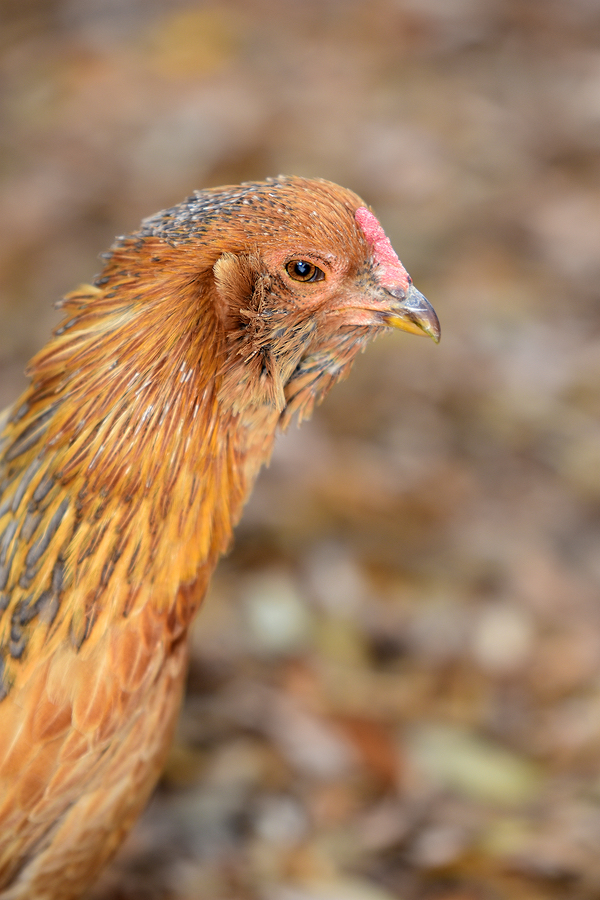
Care Tips for the Ameraucana Chicken
First, don’t over-rely on feed. Allow them to forage. Use your standard feed separately and only feed them a bit more during molting season. The Ameraucana likes to forage and is a competent forager. Therefore, it’s good to allow the chickens the freedom and scope to graze and exercise their skills. This will help keep them happy and productive.
Second, limited confinement is acceptable but shouldn’t be the norm. If you need to keep Ameraucana chickens confined for longer periods, it’s alright, and they will remain docile and content, but you should not dip below the standard of letting them out to range at least once every other day.
Third, don’t be fooled by fake Ameraucana chickens. There have been cases of people buying Ameraucana chickens that are falsely labeled as such. Their similarity to Araucana and Easter Eggers makes some beginner chicken keepers confused and prone to paying for the wrong breed. Ameraucana pullets should cost about $18-20 each. If they’re being sold for a lot less than that, you might have a “fake” Ameraucana on your hands.
Fourth, the pea comb will protect them from cold and frostbite. If you are concerned about your chickens in the winter, the Ameraucana will hold up very well. Their pea comb protects from frostbite, and they’re very tolerant of a whole range of temperatures.
Finally, ensure regular fecal testing and treatment to keep away parasitic worms. Besides facial mites, Ameraucana is also vulnerable to intestinal worms. Therefore, you should test the birds regularly and ensure they are not infested.
Conclusion:
This great American chicken may be pretty recent, but it has already made a name for itself as a friendly, low-maintenance, hardy, and useful bird to keep in the flock. It keeps one eye out for predators all the time, is robust in the cold winter, and will continue producing those beautiful blue eggs all year.
If you’re starting out in your chicken raising, or are looking for an “inoffensive” breed to bulk up your flock, then Ameraucana chickens are a great way to go.
